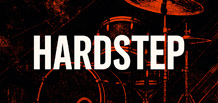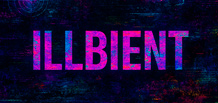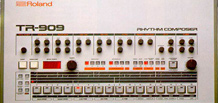Showbiz News | Page: 2
Angelcore — The Heavenly Aesthetic in Music: The Style Taking Over the Internet | Minatrix.FM News
 Angelcore is a new sensitive and atmospheric music style that is rapidly gaining popularity on the internet, TikTok, SoundCloud, and among young electronic music producers. It blends dreaminess, purity, and emotional depth, creating a unique sound that feels as if it descended straight from the heavens.
In 2024–2025, Angelcore evolved from a niche internet aesthetic into a full-fledged music movement with a growing community of artists and listeners.
What is Angelcore?
Angelcore is a mixture of ambient, ethereal wave, dream pop, witch house, heavenly vocals, as well as elements of hyperpop, trance, and lo-fi.
Main characteristics:
airy, “heavenly” synthesizers
crisp, shimmering arpeggios
angelic vocal samples
soft beats (dream pop / trip-hop inspired)
heavy use of reverb...
Angelcore is a new sensitive and atmospheric music style that is rapidly gaining popularity on the internet, TikTok, SoundCloud, and among young electronic music producers. It blends dreaminess, purity, and emotional depth, creating a unique sound that feels as if it descended straight from the heavens.
In 2024–2025, Angelcore evolved from a niche internet aesthetic into a full-fledged music movement with a growing community of artists and listeners.
What is Angelcore?
Angelcore is a mixture of ambient, ethereal wave, dream pop, witch house, heavenly vocals, as well as elements of hyperpop, trance, and lo-fi.
Main characteristics:
airy, “heavenly” synthesizers
crisp, shimmering arpeggios
angelic vocal samples
soft beats (dream pop / trip-hop inspired)
heavy use of reverb...
Hardstep: the most aggressive subgenre of Drum & Bass, Techstep, Darkstep
 Hardstep is one of the hardest and most aggressive subgenres of drum & bass, and in 2025 it is unexpectedly experiencing a new wave of popularity. Rough rhythms, metallic kicks, fast breaks and a predatory energy — all of this is once again heard at raves, in online DJ sets and in new releases from producers around the world.
Why is Hardstep coming back, and what makes it so unique? We break it down in a fresh Minatrix.FM news feature.
What is Hardstep?
Hardstep is DnB in its most punishing, straight-to-the-point form. If jungle was chaotic and “wild”, Hardstep became its heavier, more industrial continuation.
Its key traits:
low, “dirty” bass,
heavy drum grids (1/16 patterns + aggressive breaks),
sharp snares,
metallic textures,
elements borrowe...
Hardstep is one of the hardest and most aggressive subgenres of drum & bass, and in 2025 it is unexpectedly experiencing a new wave of popularity. Rough rhythms, metallic kicks, fast breaks and a predatory energy — all of this is once again heard at raves, in online DJ sets and in new releases from producers around the world.
Why is Hardstep coming back, and what makes it so unique? We break it down in a fresh Minatrix.FM news feature.
What is Hardstep?
Hardstep is DnB in its most punishing, straight-to-the-point form. If jungle was chaotic and “wild”, Hardstep became its heavier, more industrial continuation.
Its key traits:
low, “dirty” bass,
heavy drum grids (1/16 patterns + aggressive breaks),
sharp snares,
metallic textures,
elements borrowe...
Lounge — music of comfort: how the style became popular again | Minatrix.FM News
 Lounge is a style that does one thing perfectly: it sets the mood. That calm, soft, warm feeling as if you’re sitting in a cozy café, a luxury lounge bar, or at home by the fireplace with a cup of coffee.
And here’s the good news — in 2025, lounge is going through a powerful revival. It’s coming back into playlists, hotel lobbies, relax streams and even club culture, but in a refreshed, modern form.
What is Lounge?
Lounge is a branch of light electronic and instrumental music created for rest, relaxation and background comfort.
The genre absorbs elements of:
downtempo,
jazz,
chillout,
bossanova,
ambient,
easy listening,
smooth funk.
The music sounds soft and unobtrusive, yet atmospheric: warm keys, velvety bass, light percussion, cozy electron...
Lounge is a style that does one thing perfectly: it sets the mood. That calm, soft, warm feeling as if you’re sitting in a cozy café, a luxury lounge bar, or at home by the fireplace with a cup of coffee.
And here’s the good news — in 2025, lounge is going through a powerful revival. It’s coming back into playlists, hotel lobbies, relax streams and even club culture, but in a refreshed, modern form.
What is Lounge?
Lounge is a branch of light electronic and instrumental music created for rest, relaxation and background comfort.
The genre absorbs elements of:
downtempo,
jazz,
chillout,
bossanova,
ambient,
easy listening,
smooth funk.
The music sounds soft and unobtrusive, yet atmospheric: warm keys, velvety bass, light percussion, cozy electron...
Space Disco: the renaissance of the genre in the 2020s, new artists and cosmic sound
 Space Disco, the style that sent listeners on a cosmic journey without a rocket back in the late ’70s, is now experiencing a true renaissance. Disco rhythms, synthesizers, retrofuturism and sci-fi aesthetics are once again attracting producers, DJs and fans of electronic music all over the world.
And if it seemed to you that cosmic disco was left behind in the vinyl era, the last decade proves the opposite: Space Disco is coming back with a new shine.
What is Space Disco?
Space Disco is a subgenre of disco and early synthesizer music, inspired by:
science fiction,
space missions,
retrofuturistic imagery,
the aesthetics of synths and analog sound.
Typical elements include:
orbital synth lines,
vocoder vocals,
drum machines,
“space” FX,
smooth yet dancea...
Space Disco, the style that sent listeners on a cosmic journey without a rocket back in the late ’70s, is now experiencing a true renaissance. Disco rhythms, synthesizers, retrofuturism and sci-fi aesthetics are once again attracting producers, DJs and fans of electronic music all over the world.
And if it seemed to you that cosmic disco was left behind in the vinyl era, the last decade proves the opposite: Space Disco is coming back with a new shine.
What is Space Disco?
Space Disco is a subgenre of disco and early synthesizer music, inspired by:
science fiction,
space missions,
retrofuturistic imagery,
the aesthetics of synths and analog sound.
Typical elements include:
orbital synth lines,
vocoder vocals,
drum machines,
“space” FX,
smooth yet dancea...
Broken Beat: why broken rhythms have returned and become a hit
 Broken Beat, a style long considered the domain of jazz-fusion heads and the London underground, is suddenly back in the spotlight. Its signature broken rhythms, live-feeling grooves and warm soul energy are once again heard at festivals, in clubs and in new releases from artists nobody had heard of just yesterday.
Why has the genre returned — and what makes it so relevant today? We break it down in the latest news feature from Minatrix.FM.
What is Broken Beat and why does it sound so unusual?
Broken Beat is music where the rhythm is deliberately “broken”: the kick is pushed onto the “wrong” beat, hi-hats shuffle and wobble, snares hit in all the unexpected places — and together it creates the feel of a live, organic improvisation.
The genre brings toget...
Broken Beat, a style long considered the domain of jazz-fusion heads and the London underground, is suddenly back in the spotlight. Its signature broken rhythms, live-feeling grooves and warm soul energy are once again heard at festivals, in clubs and in new releases from artists nobody had heard of just yesterday.
Why has the genre returned — and what makes it so relevant today? We break it down in the latest news feature from Minatrix.FM.
What is Broken Beat and why does it sound so unusual?
Broken Beat is music where the rhythm is deliberately “broken”: the kick is pushed onto the “wrong” beat, hi-hats shuffle and wobble, snares hit in all the unexpected places — and together it creates the feel of a live, organic improvisation.
The genre brings toget...
Illbient — Dark, Experimental Dub-Ambient: History, Sound, Artists
 Illbient is one of the most enigmatic and underrated electronic music genres. Dark, industrial and chaotic, it emerged in New York in the mid-1990s, became cult among avant-garde producers and is now experiencing a new renaissance. Its sound is a blend of urban noise, hip-hop beats, ambient and experimental textures. It’s the music of ruined cities, night streets, industrial aesthetics and abstract emotions.
What is Illbient?
Illbient is a hybrid of ambient, dub, hip hop, noise and post-industrial textures. The name comes from the slang word “ill” (dark, strange, twisted, “sick”) + ambient.
The genre creates an atmosphere of:
thick sonic fog,
slow trip-hop/dub-style grooves,
noisy, degraded loops,
broken, urban-sounding samples,
glitch effects and gr...
Illbient is one of the most enigmatic and underrated electronic music genres. Dark, industrial and chaotic, it emerged in New York in the mid-1990s, became cult among avant-garde producers and is now experiencing a new renaissance. Its sound is a blend of urban noise, hip-hop beats, ambient and experimental textures. It’s the music of ruined cities, night streets, industrial aesthetics and abstract emotions.
What is Illbient?
Illbient is a hybrid of ambient, dub, hip hop, noise and post-industrial textures. The name comes from the slang word “ill” (dark, strange, twisted, “sick”) + ambient.
The genre creates an atmosphere of:
thick sonic fog,
slow trip-hop/dub-style grooves,
noisy, degraded loops,
broken, urban-sounding samples,
glitch effects and gr...
Brostep: History, differences from Dubstep, aggression, festival sound and the genre’s comeback
 Brostep is gaining momentum again on the global electronic scene — heavier, louder and more aggressive than ever before. The genre that once became synonymous with the ultra-hard side of dubstep is now experiencing a new wave of popularity thanks to fresh releases, festival live sets and the revival of the “American school” of bass music.
What is Brostep?
Brostep is a subgenre of dubstep that focuses on:
hyper-boosted basslines,
harsh digital synths,
tear-out drops,
powerful metallic growl effects,
and dense EDM-style energy.
If classic UK dubstep is dark, atmospheric and minimalist, then Brostep is pure aggression, designed for massive festival stages.
History of the genre
Although dubstep itself has its roots in London and the British underground, Brostep to...
Brostep is gaining momentum again on the global electronic scene — heavier, louder and more aggressive than ever before. The genre that once became synonymous with the ultra-hard side of dubstep is now experiencing a new wave of popularity thanks to fresh releases, festival live sets and the revival of the “American school” of bass music.
What is Brostep?
Brostep is a subgenre of dubstep that focuses on:
hyper-boosted basslines,
harsh digital synths,
tear-out drops,
powerful metallic growl effects,
and dense EDM-style energy.
If classic UK dubstep is dark, atmospheric and minimalist, then Brostep is pure aggression, designed for massive festival stages.
History of the genre
Although dubstep itself has its roots in London and the British underground, Brostep to...
Full-On — Psychedelic Energy at Its Peak | Minatrix.FM
 Full-On — the most explosive subgenre of psytrance, blending a powerful rolling bass, high tempos (typically 140–148 BPM), bright melodies and a cinematic atmosphere. It’s the sound of sunrise dancefloors and open-air festivals: dense production, tight drum programming and a constant feeling of lift-off.
What is Full-On (in a nutshell)
Full-On is the dancefloor-oriented, melodic and “fluffy” high-end take on psytrance. It inherits the psychedelia of Goa trance, but delivers it in a more energetic, driving, “laser-focused” form: bouncy 1/16 rolling bass, a tight 4/4 kick, stepped arpeggios, acid leads, dynamic breaks and impactful drops.
Key traits:
Tempo 140–148 BPM, occasionally 148–150 for twilight sets.
Rolling bass (1/16) + a dr...
Full-On — the most explosive subgenre of psytrance, blending a powerful rolling bass, high tempos (typically 140–148 BPM), bright melodies and a cinematic atmosphere. It’s the sound of sunrise dancefloors and open-air festivals: dense production, tight drum programming and a constant feeling of lift-off.
What is Full-On (in a nutshell)
Full-On is the dancefloor-oriented, melodic and “fluffy” high-end take on psytrance. It inherits the psychedelia of Goa trance, but delivers it in a more energetic, driving, “laser-focused” form: bouncy 1/16 rolling bass, a tight 4/4 kick, stepped arpeggios, acid leads, dynamic breaks and impactful drops.
Key traits:
Tempo 140–148 BPM, occasionally 148–150 for twilight sets.
Rolling bass (1/16) + a dr...
Detroit Techno: Juan Atkins, Derrick May, Kevin Saunderson — the foundation of techno music
 Detroit Techno — the historic roots of true techno on Minatrix.FM
Detroit Techno is more than a genre. It is the historical wellspring of the entire techno culture — the moment when the industrial rhythm of the motor city became art. Born in the 1980s in Detroit, Michigan, Detroit Techno became the foundation of modern electronic music — from club techno and house to futuristic branches like electro and minimal.
What is Detroit Techno
Detroit Techno is the primordial form of techno, combining:
mechanical rhythms and minimalism,
deep basslines, industrial noise and synthetic melodies,
a futurist outlook and the pursuit of utopia through technology.
This music feels like the pulse of the factory and a dream of the future. You can hear both the clatter of machines an...
Detroit Techno — the historic roots of true techno on Minatrix.FM
Detroit Techno is more than a genre. It is the historical wellspring of the entire techno culture — the moment when the industrial rhythm of the motor city became art. Born in the 1980s in Detroit, Michigan, Detroit Techno became the foundation of modern electronic music — from club techno and house to futuristic branches like electro and minimal.
What is Detroit Techno
Detroit Techno is the primordial form of techno, combining:
mechanical rhythms and minimalism,
deep basslines, industrial noise and synthetic melodies,
a futurist outlook and the pursuit of utopia through technology.
This music feels like the pulse of the factory and a dream of the future. You can hear both the clatter of machines an...
Spacesynth — Music, Genre, Artists. Listen and Download Spacesynth MP3
 Spacesynth is a genre of electronic music that emerged in the 1980s at the crossroads of Italo Disco, synthpop, and space music. It captures humanity’s dreams of stars, the future, and advanced technology in shimmering arpeggios, warm analog synths, and endless melodic lines.
Origins and inspiration
Spacesynth appeared in Europe in the mid-1980s — the era of VHS sci-fi, laser shows, and the first affordable home synthesizers. Inspired by cosmic aesthetics and the electronic soundscapes of Jean-Michel Jarre and Vangelis, producers like Raymond Donnez (Don Ray), Laserdance, Koto, Cyber People, Hypnosis, and Proxyon began creating instrumental tracks that felt like a space odyssey.
The genre became a natural extension of Italo Disco, but largely without vocals, focusing instead on...
Spacesynth is a genre of electronic music that emerged in the 1980s at the crossroads of Italo Disco, synthpop, and space music. It captures humanity’s dreams of stars, the future, and advanced technology in shimmering arpeggios, warm analog synths, and endless melodic lines.
Origins and inspiration
Spacesynth appeared in Europe in the mid-1980s — the era of VHS sci-fi, laser shows, and the first affordable home synthesizers. Inspired by cosmic aesthetics and the electronic soundscapes of Jean-Michel Jarre and Vangelis, producers like Raymond Donnez (Don Ray), Laserdance, Koto, Cyber People, Hypnosis, and Proxyon began creating instrumental tracks that felt like a space odyssey.
The genre became a natural extension of Italo Disco, but largely without vocals, focusing instead on...
Britpop: History, the “Big Four” (Oasis, Blur, Pulp, Suede) and the Best Albums of the ’90s
 Britpop is not just a genre, but a cultural phenomenon that defined the sound of British music in the 1990s. It became a symbol of the era when Britain once again asserted itself as a musical superpower — with guitar-driven energy, witty lyrics and the spirit of youth.
Origins and context
In the early 1990s, the UK music scene was heavily influenced by American grunge (Nirvana, Pearl Jam). Against this backdrop, a new movement emerged, focused on British identity, national humour and everyday life.
Inspired by The Beatles, The Kinks, The Smiths and David Bowie, a new wave of musicians crafted a sound that felt close to home — melodic, accessible and sharply observant.
Key Britpop bands
Oasis
The Manchester brothers Liam and Noel Gallagher turned Britpop into a people’s mo...
Britpop is not just a genre, but a cultural phenomenon that defined the sound of British music in the 1990s. It became a symbol of the era when Britain once again asserted itself as a musical superpower — with guitar-driven energy, witty lyrics and the spirit of youth.
Origins and context
In the early 1990s, the UK music scene was heavily influenced by American grunge (Nirvana, Pearl Jam). Against this backdrop, a new movement emerged, focused on British identity, national humour and everyday life.
Inspired by The Beatles, The Kinks, The Smiths and David Bowie, a new wave of musicians crafted a sound that felt close to home — melodic, accessible and sharply observant.
Key Britpop bands
Oasis
The Manchester brothers Liam and Noel Gallagher turned Britpop into a people’s mo...
Indie is the music of freedom, sincerity, and creative independence.
 Indie (short for independent) is not just a musical genre, but an entire philosophy of independent creativity. It unites hundreds of directions — from indie rock and indie pop to indie folk, electronic and lo-fi — while preserving its core idea: self-expression free from mainstream constraints.
Origins and Evolution
1970s–1980s: The Beginning
The first “indie” artists emerged in the era of punk and alternative rock, when musicians sought to escape the control of major labels. In the UK, independent labels like Rough Trade, Factory Records, 4AD, Creation appeared, while in the US, labels such as Sub Pop, Merge, and Matador emerged. Bands that defined the spirit of independence arrived on the scene: The Smiths, Joy Division, Sonic Youth, Pixies, R.E.M..
1990s: T...
Indie (short for independent) is not just a musical genre, but an entire philosophy of independent creativity. It unites hundreds of directions — from indie rock and indie pop to indie folk, electronic and lo-fi — while preserving its core idea: self-expression free from mainstream constraints.
Origins and Evolution
1970s–1980s: The Beginning
The first “indie” artists emerged in the era of punk and alternative rock, when musicians sought to escape the control of major labels. In the UK, independent labels like Rough Trade, Factory Records, 4AD, Creation appeared, while in the US, labels such as Sub Pop, Merge, and Matador emerged. Bands that defined the spirit of independence arrived on the scene: The Smiths, Joy Division, Sonic Youth, Pixies, R.E.M..
1990s: T...
Smooth Jazz is music that relaxes, inspires, and sets the mood.
 Smooth Jazz is a subgenre of jazz where softness, melody, and a modern sound meet. It blends elements of R&B, soul, funk, and pop while preserving jazz harmony and an improvisational spirit. This is music that makes time feel slower: it’s all about calm, gentle grooves, and the warm tones of saxophone, guitar, and keys.
History of the Genre
1970s: Origins Smooth Jazz emerged as a continuation of fusion and cool jazz, when jazz musicians began using electric instruments and laid-back groovy rhythms inspired by R&B and pop. Key figures such as Grover Washington Jr., George Benson, David Sanborn, and Bob James helped make jazz more accessible to a wider audience.
1980s: Commercial Breakthrough In this decade Smooth Jazz took shape as an independent style. U.S. radio stations beg...
Smooth Jazz is a subgenre of jazz where softness, melody, and a modern sound meet. It blends elements of R&B, soul, funk, and pop while preserving jazz harmony and an improvisational spirit. This is music that makes time feel slower: it’s all about calm, gentle grooves, and the warm tones of saxophone, guitar, and keys.
History of the Genre
1970s: Origins Smooth Jazz emerged as a continuation of fusion and cool jazz, when jazz musicians began using electric instruments and laid-back groovy rhythms inspired by R&B and pop. Key figures such as Grover Washington Jr., George Benson, David Sanborn, and Bob James helped make jazz more accessible to a wider audience.
1980s: Commercial Breakthrough In this decade Smooth Jazz took shape as an independent style. U.S. radio stations beg...
Roland TR-909 — the rhythm machine that changed electronic music forever
 Roland TR-909 Rhythm Composer is an iconic drum machine released by Roland in 1983. Sitting at the crossroads of the analog and digital eras, it became a cornerstone of the emerging sounds of house, techno, acid, trance and rave culture, shaping the signature drum patterns that are still considered a benchmark today.
Historical context
In the early 1980s, most manufacturers were chasing realistic acoustic drum sounds. The TR-909 went against that trend: it did not try to imitate a real drum kit, but delivered a stylized, fat and punchy tone, perfectly suited for clubs and large sound systems.
Paradoxically, on release the TR-909 was a commercial flop. Its true recognition came later, when units hit the second-hand market and young producers in Chicago, Detroit and across Europe discovered ...
Roland TR-909 Rhythm Composer is an iconic drum machine released by Roland in 1983. Sitting at the crossroads of the analog and digital eras, it became a cornerstone of the emerging sounds of house, techno, acid, trance and rave culture, shaping the signature drum patterns that are still considered a benchmark today.
Historical context
In the early 1980s, most manufacturers were chasing realistic acoustic drum sounds. The TR-909 went against that trend: it did not try to imitate a real drum kit, but delivered a stylized, fat and punchy tone, perfectly suited for clubs and large sound systems.
Paradoxically, on release the TR-909 was a commercial flop. Its true recognition came later, when units hit the second-hand market and young producers in Chicago, Detroit and across Europe discovered ...
Digital Amnesia: Why Google Hides Music Culture from Users
 (A Minatrix.FM case study)
Minatrix.FM is more than just an online radio station. It’s an ecosystem years in the making for electronic-music lovers — a portal for DJs, producers, and listeners featuring rare artist biographies, in-depth genre analyses, themed playlists, an archive of original shows, and a 24/7 club stream. On the site you’ll find what YouTube, Spotify and aggregators often don’t provide: ultra-niche selections (EBM, Futurepop, Goa-trance, Minimal Techno), scene histories, label spotlights, rare releases, and the context without which music culture loses its depth.
Minatrix.FM doesn’t chase clickbait — it consistently invests in educational and encyclopedic value. Exactly the kind of project a search engine ought to surface — and ye...
(A Minatrix.FM case study)
Minatrix.FM is more than just an online radio station. It’s an ecosystem years in the making for electronic-music lovers — a portal for DJs, producers, and listeners featuring rare artist biographies, in-depth genre analyses, themed playlists, an archive of original shows, and a 24/7 club stream. On the site you’ll find what YouTube, Spotify and aggregators often don’t provide: ultra-niche selections (EBM, Futurepop, Goa-trance, Minimal Techno), scene histories, label spotlights, rare releases, and the context without which music culture loses its depth.
Minatrix.FM doesn’t chase clickbait — it consistently invests in educational and encyclopedic value. Exactly the kind of project a search engine ought to surface — and ye...

